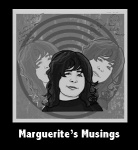“Jailed for Freedom” by Doris Stevens is featured book on Suffrage Bookshelf on Vimeo.
You can listen to the “Jailed for Freedom” book read free on Librivox.

Have you heard the perspective referred to above that has been getting spread around lately? It compares the English and American suffrage movements and concludes that the English suffragette movement was exciting and creative while the American suffrage activists were boring and trite. So sad that these sister movements are being pitted against each other. If there’s anything positive about this old myth being trotted out into public, it’s to give these faulty assumptions an airing.
THE MYTH COMPARING ENGISH AND AMERICAN ACTIVISTS
The myth of exciting versus boring relies on the assumption that the English suffragists’ use of property damage, that is, a degree of violence, placed the English suffrage movement in a position of being considered more interesting than the American women who were “polite.” Translate that to “nonviolent.”
Sweeping generalizations underlie this myth. In fact, the women’s rights movements in England and the United States were committed to nonviolence. And later on, the English tactics that included property damage were controversial in their time and did not represent the sentiments of all English women engaged in the movement. Suffrage activists on both sides of the Atlantic Ocean argued vehemently about the best tactics and strategies necessary to reach their goals. And while they disagreed about tactics, they remained committed to the goal of freedom.
 THROWING ROCKS AND BLOWING UP MAILBOXES
THROWING ROCKS AND BLOWING UP MAILBOXES
Sadly, the perspective comparing the Americans and the English relies on a misunderstanding. Nonviolent tactics and strategies are considerably more difficult and challenging to implement than a decision to resort to violence. Throwing rocks definitely has more juice for the purpose of a mainstream film. A commitment to nonviolent social change isn’t as visual and tension producing as deciding to blow up a mailbox.
In fact, the ties between American and English activists were close. And both movements, for all their differences, can be plotted on the same path of working within a rigid political and social structure to accomplish similar goals while facing considerable resistance from government to win voting rights. While the American suffrage activists remained committed to nonviolent strategies, there’s no doubt that violence was used against them, especially those who picketed the White House in 1917 and were imprisoned and assaulted by authorities.
THE SIMILARITIES ARE IMPORTANT TO APPRECIATE
Both the suffrage activists in England and the U.S. went up against hard-core resistance. The picketing of the White House in 1917 heightened awareness of the women’s suffrage movement in the U.S. And if these activists hadn’t been successful in impacting national policy, it’s difficult to predict now, in retrospect, if U.S. women would have won the right to vote at all in 1920.
This old tired myth comparing the two movements will hopefully lose its power once the public is better informed about the spirit and determination and dedication that kept American suffrage activists with their eye on the prize. Check out Doris Stevens’ work, “Jailed for Freedom.” These free audio files from Librivox fill in more of what it took for American women to win voting rights.
As more research on the women’s suffrage movement is completed, books are published, and the constituency interested in this part of history grows stronger, we’ll join hands across the Atlantic. I envision a grand parade or awards banquet where English and American women honor our suffrage activist ancestors and properly celebrate this extraordinary accomplishment of winning voting rights together.
Onward to the 2020 suffrage centennial celebration!
Follow Suffrage Wagon News Channel on Facebook and Twitter. Quarterly newsletters just by signing up. Suffrage Wagon News Channel has video platforms on Vimeo and YouTube.
Comment on the Suffrage Wagon blog. Meet your friends at the Suffrage Wagon Cafe. Follow SuffrageCentennials.com for news and views about upcoming women’s suffrage centennial events and celebrations.
“Choose it and Use it” is a video reminding us of how the past is linked to what we do today and its impact on the future. Celebrate women’s freedom to vote.






0 Comments